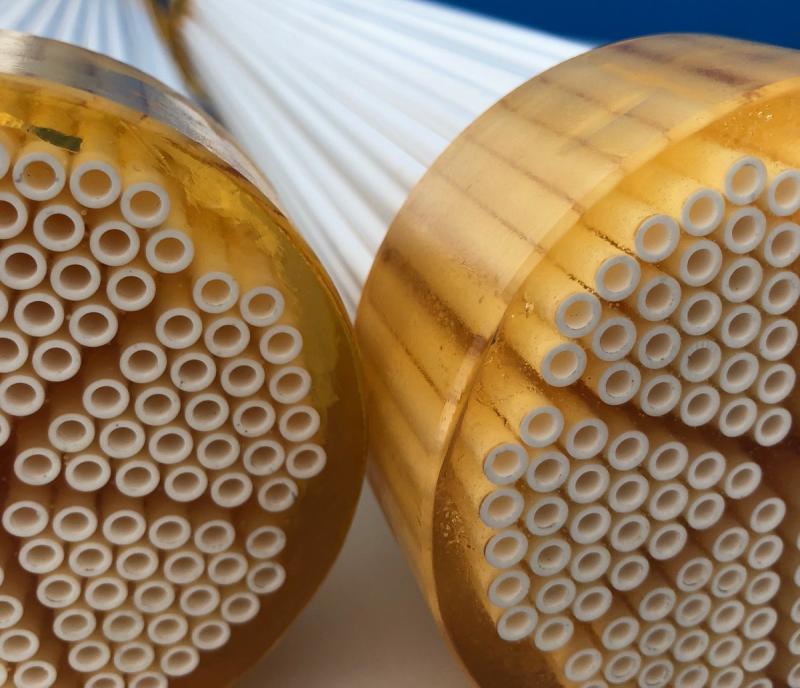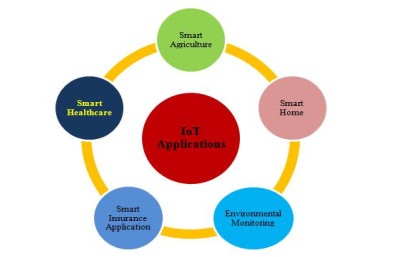Market Analysis of Membrane Bioreactors (MBR) and Contribution to Sustainable Development Goals (SDGs)
The global Membrane Bioreactor (MBR) market was valued at approximately USD 3.20 billion in 2023. It is projected to experience significant growth, reaching an estimated USD 6.78 billion by 2033, expanding at a Compound Annual Growth Rate (CAGR) of 7.80% from 2024 to 2033. This growth is intrinsically linked to the global pursuit of the United Nations Sustainable Development Goals (SDGs), particularly those concerning water, sanitation, and sustainable infrastructure.
Alignment with Sustainable Development Goals (SDGs)
The expansion of the MBR market is a direct response to the increasing need for sustainable and efficient water management solutions. MBR technology, which integrates biological treatment with membrane filtration, is a critical tool for achieving several key SDGs.
SDG 6: Clean Water and Sanitation
MBR systems are fundamental to achieving SDG 6 targets. Their primary function is to provide advanced wastewater treatment, which results in high-quality effluent safe for discharge or reuse. This contributes to:
- Improving water quality by reducing pollution.
- Increasing water-use efficiency through safe water recycling and reuse.
- Supporting integrated water resources management.
SDG 11: Sustainable Cities and Communities
In urban environments, MBR technology supports SDG 11 by enabling the development of resilient and sustainable infrastructure. The compact footprint of MBR systems makes them highly suitable for densely populated urban areas where space is limited, allowing for effective decentralized or centralized wastewater management without extensive land use.
SDG 9: Industry, Innovation, and Infrastructure
The MBR market represents a significant innovation in water treatment infrastructure. Its adoption by various industries for treating industrial effluent promotes sustainable industrialization. This technology allows industries to meet stringent environmental regulations and enhances their operational sustainability by facilitating water reuse within their processes.
SDG 12: Responsible Consumption and Production
MBR systems enable circular economy principles within industrial and municipal water management. By treating wastewater to a high standard, they facilitate its reuse, thereby reducing the demand for fresh water resources and promoting sustainable patterns of consumption and production.
Market Segmentation
By Type
- Submerged MBR
- Side-stream MBR
By Application
- Municipal wastewater treatment
- Industrial effluent treatment
- Water reuse
- Sludge management
Regional Analysis
The market’s regional dynamics reflect varying stages of economic development and regulatory focus on sustainability.
- Asia-Pacific: This region dominates the market, driven by rapid industrialization, urbanization, and the subsequent need for robust water and wastewater infrastructure to meet sustainability targets.
- North America and Europe: These regions exhibit steady growth, supported by stringent environmental regulations, government investment in infrastructure upgrades, and a strong focus on achieving water quality and reuse goals aligned with the SDGs.
- South America, Middle East & Africa: These regions represent emerging markets where growing awareness of water scarcity and pollution is expected to drive future investment in advanced treatment technologies like MBRs.
Competitive Landscape
The market is characterized by the presence of key industry players who are instrumental in advancing MBR technology and driving its adoption globally. These companies contribute to sustainability by continuously improving the efficiency and cost-effectiveness of water treatment solutions. Major players include:
- GE Water & Process Technologies
- Evoqua Water Technologies
- SUEZ
- Pentair
- Veolia Water Technologies
- Koch Membrane Systems
- Mitsubishi Rayon
Analysis of Sustainable Development Goals (SDGs) in the Article
1. Which SDGs are addressed or connected to the issues highlighted in the article?
The article on the Membrane Bioreactor (MBR) Market highlights technologies and market trends that are directly relevant to several Sustainable Development Goals. The primary focus on wastewater treatment and water reuse connects strongly with the following SDGs:
- SDG 6: Clean Water and Sanitation: This is the most prominent SDG addressed. The article’s core subject is MBR technology, described as an “efficient and sustainable wastewater treatment solution” that produces “high-quality effluent suitable for reuse.” This directly tackles the global challenge of water quality and sanitation.
- SDG 9: Industry, Innovation, and Infrastructure: The article discusses the MBR market’s growth, driven by “adoption of advanced membrane materials and configurations.” This points to innovation in sustainable technologies and the development of resilient infrastructure (“municipal wastewater treatment,” “industrial effluent treatment”) to support economic growth and environmental protection.
- SDG 11: Sustainable Cities and Communities: The text explicitly states that MBR technology is “particularly advantageous in urban areas facing water scarcity” and its growth is linked to “rapid industrialization and urbanization.” This connects to making cities more sustainable by improving waste management and ensuring access to clean water.
- SDG 12: Responsible Consumption and Production: The emphasis on “water reuse” and “sludge management” aligns with the goal of achieving sustainable management and efficient use of natural resources. By treating industrial and municipal wastewater, MBR technology helps reduce pollution and waste generation, promoting more sustainable production patterns.
2. What specific targets under those SDGs can be identified based on the article’s content?
Based on the article’s discussion of MBR technology and its applications, several specific SDG targets can be identified:
-
Under SDG 6 (Clean Water and Sanitation):
- Target 6.3: By 2030, improve water quality by reducing pollution… halving the proportion of untreated wastewater and substantially increasing recycling and safe reuse globally. The article directly addresses this by describing MBRs as a technology for “wastewater treatment” that enables “water reuse” and reduces “pollution control.”
-
Under SDG 9 (Industry, Innovation, and Infrastructure):
- Target 9.4: By 2030, upgrade infrastructure and retrofit industries to make them sustainable, with increased resource-use efficiency and greater adoption of clean and environmentally sound technologies. The article highlights the use of MBRs for “industrial effluent treatment” and describes the technology as an “efficient and sustainable” solution, signifying a move towards cleaner industrial processes.
-
Under SDG 11 (Sustainable Cities and Communities):
- Target 11.6: By 2030, reduce the adverse per capita environmental impact of cities, including by paying special attention to… municipal and other waste management. The article’s mention of “municipal wastewater treatment” and the technology’s advantages in “urban areas” directly relates to improving waste management in cities.
-
Under SDG 12 (Responsible Consumption and Production):
- Target 12.2: By 2030, achieve the sustainable management and efficient use of natural resources. The concept of “water reuse” mentioned in the article is a direct strategy for the efficient use of water resources.
- Target 12.5: By 2030, substantially reduce waste generation through prevention, reduction, recycling and reuse. The applications for “water reuse” and “sludge management” are clear examples of recycling and reducing the final waste output from municipal and industrial sources.
3. Are there any indicators mentioned or implied in the article that can be used to measure progress towards the identified targets?
The article provides several quantitative and qualitative indicators that can be used to measure progress towards the identified targets:
- Market Growth and Value: The article states the MBR market was “valued at approximately USD 3.20 billion in 2023 and is projected to reach around USD 6.78 billion by 2033,” with a “CAGR of 7.80%.” This financial data serves as a proxy indicator for the global investment in and adoption of advanced wastewater treatment technology (relevant to SDG 6.3 and 9.4).
- Technology Adoption Rate: The “significant growth” of the MBR market and the “adoption of advanced membrane materials and configurations” can be seen as an indicator of the uptake of clean and environmentally sound technologies, as called for in Target 9.4.
- Application in Specific Sectors: The segmentation of the market by application—”municipal wastewater treatment” and “industrial effluent treatment”—implies that progress can be measured by the proportion of wastewater being treated in these sectors using advanced technologies like MBRs (relevant to SDG 6.3 and 11.6).
- Increase in Water Reuse: The specific application of “water reuse” is mentioned as a key segment. An increase in the deployment of MBR systems for this purpose would be a direct indicator of progress towards Target 6.3 and Target 12.2, measuring the volume of water being recycled.
| SDGs | Targets | Indicators |
|---|---|---|
| SDG 6: Clean Water and Sanitation | Target 6.3: Improve water quality by reducing pollution, halving the proportion of untreated wastewater, and increasing recycling and safe reuse. | The proportion of industrial and municipal wastewater treated; Volume of water made “suitable for reuse” through MBR systems. |
| SDG 9: Industry, Innovation, and Infrastructure | Target 9.4: Upgrade infrastructure and retrofit industries for sustainability with greater adoption of clean and environmentally sound technologies. | The market value and growth rate (CAGR of 7.80%) of MBR technology; Rate of adoption of MBRs for “industrial effluent treatment.” |
| SDG 11: Sustainable Cities and Communities | Target 11.6: Reduce the adverse per capita environmental impact of cities, focusing on municipal waste management. | The deployment of MBR systems for “municipal wastewater treatment” in “urban areas.” |
| SDG 12: Responsible Consumption and Production | Target 12.2: Achieve the sustainable management and efficient use of natural resources.
Target 12.5: Substantially reduce waste generation through recycling and reuse. |
The growth of the “water reuse” application segment of the MBR market; Implementation of “sludge management” solutions associated with MBRs. |
Source: openpr.com







